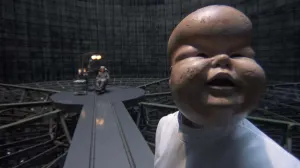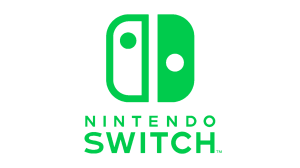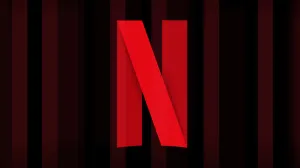
In our introduction to how we analyze comics sales at ComicBook.com, we mentioned that publishers have a wide variety of strategies available to inflate and manipulate the sales of an individual issue. Direct market sales figures only calculate for the number of units sold to retailers (or other buyers utilizing Diamond’s distribution), not the actual units sold to readers. This makes identifying inflated sales and the causes of that inflation very useful, especially if you want to get a sense of how popular a given series really is.
Videos by ComicBook.com
None of this is to say that publishers or creators are doing anything wrong in playing the hype man for their own series. Comics has a proud tradition of puffery with no better example than the most famous figure the medium has ever produced: Stan Lee. It was his adept hyperbole and incredible enthusiasm which helped to ensure Marvel Comics could build a new universe even as it was ready to go out of business in 1961. Modern creators and publishers have taken a page from his book as they attempt to have the next best-selling title on stands, by any means necessary.
It is still useful to be able to glimpse past the talk and get a better sense of reality though, and that’s where we come in. June 2018 provides an excellent case study in how several new releases inflated their premieres well beyond what one would expect based on similar and subsequent sales using a variety of strategies. We are examining three popular releases from this month in order to offer some insight on how direct market sales often fail to reflect readership: The Magic Order #1, Tony Stark: Iron Man #1, and Justice League #1.
HOW TO SPOT AN OUTLIER
As we’ve stated before, the best way to spot oddities in the direct market is by looking at larger trends. Comparing similar series to one another provides a foundation for what is the norm and what is way off. That also applies to looking at the same set of series over time. For these three examples, we examined all of the new #1 issues from June 2018 in the top 100 selling series (to maintain a reasonably large audience), only excluding those that were marked as one-shots or an event spinoff (due to their uniquely limited audience). Even with those restrictions, there were 14 issues left to be compared.
It’s common for the launch of new series to see a large drop between issues #1 and #2, but these three examples all showed a much higher drop than any of their competition. The average decrease in sales between the first two issues in this set was 43.21%, and the median (i.e. middle) decrease was 39.82%. The Magic Order, Tony Stark: Iron Man, and Justice League decreased 80.34%, 67.91%, and 57.05%, respectively. That is far outside the norm, with The Magic Order being so far outside the data set that it functions as an outlier — suggesting it should be ignored altogether when looking for trends. Based on those numbers, it’s useful to look more closely at each title to see if there are specific reasons why the #1 issue sold much higher than #2, and what that suggests about each title’s actual audience.
THE MAGIC ORDER
While many of the strategies used by publishers to increase sales are shared, The Magic Order #1 represents a very unique case. The massive drop in sales between the first and second issues is unheard of in direct market comics and represents a true statistical anomaly. Total initial sales of 157,731 issues dropped to 31,006 issues in only one month, allowing the comic to be promoted as “highest-selling new comic-book launch in almost 20 years” without really breaking from standard sales trends.
Investigating this specific occurrence reveals something very interesting. It has been alleged that approximately 100,000 copies of The Magic Order were purchased by ReedPOP, the convention organizer of C2E2, New York Comic Con, and other popular shows, in order to have Mark Millar, the series’ writer, attend as a guest. Neither ReedPOP nor Millar have commented on these allegations. However, if you deduct 100,000 from the sales of The Magic Order #1, then the resulting trend falls neatly in line with similar titles, including the newest volumes of Kick-Ass, Hit-Girl, and Oblivion Song, all popular Image Comics launches in 2018, two of them written by Millar himself. It’s reasonable to believe that The Magic Order‘s direct market sales were closer to 57,731 total units, marking it as a solid, but similar launch to other high-profile creator-owned series. It’s far less reasonable to assume that 157,731 titles were actually sold directly to retailers, much less readers.
TONY STARK: IRON MAN
Tony Stark: Iron Man #1 represents another very inflated debut, albeit one using much more common strategies to boost sales, specifically variant covers. Direct market sales figures only represent the number of comics that all stores purchase, not how much they sell. Therefore providing retailers with an incentive to buy more than they can sell can make a launch more successful in pure revenue and provide the appearance of greater popularity with readers. That is exactly what many variant covers accomplish.

This relaunch of the Iron Man franchise included many incentive covers, including a very rare 1:200 Alex Ross variant. What that essentially means is that for retailers to order one copy of the Alex Ross cover, they must have already purchased 200 copies of the same issue. On its surface that might not make sense if retailers only expect to sell 50 or 100 copies of the issue. However, the rarity of these incentive covers allow them to sell those issues at a higher price. Even almost one year after its debut, the Alex Ross variant of Tony Stark: Iron Man #1 is selling between $29.99 and $90.08 (without a CGC grade).
The launch of this title included 20 standard variants featuring different versions of Tony Stark’s armor drawn by artists Alexander Lozano and Valerio Schiti, in addition to various other incentives. That wide array of covers adds an additional layer of collectability as some fans and speculators might seek to create a complete set of the armor variants or the entire array of covers. This encourages stores to purchase 20 issues for a single potential customer. Altogether, Tony Stark: Iron Man #1 featured dozens of different variant and incentivized covers, each of which added sales without adding audience.
JUSTICE LEAGUE
This strategy of utilizing variant covers is not unique to Marvel. It’s a common strategy with its distinguished competition, as well. Justice League #1 provided a number of incentivized covers, including both a 1:100 and 1:250 variant featuring Jim Cheung’s inks and pencils, respectively, for the standard cover. However, there were only about 17 variant covers for this debut, including some that were custom made for specific comic stores. The 1:250 variant also likely received less demand than the 1:200 Alex Ross variant as it showcased art that was already available elsewhere, albeit in a slightly different form. The sales of Justice League #1 were no doubt inflated, but the reasons for retailers to order more copies than they might expect to sell were limited in comparison. This goes a long way in explaining why Tony Stark: Iron Man experienced a 16% larger decrease in sales between its first and second issues. It is not simply about how a publisher incentives over-ordering a title, but to what degree they do so.
THE BIG PICTURE
There are other strategies used by publishers to sell more comics than a retailer might expect to sell as well. Access to variant covers and other incentives are often tied with increasing orders from previous months or, sometimes, even on unrelated series. This provides a complex set of choices that individual retailers must navigate every month, one that also obfuscates how many copies of any given series are being ordered with the expectation they will be sold.
It’s incredibly difficult to gauge how effective any given incentive is for increasing sales, especially without the detailed, individualized data for specific purchasers that only Diamond and publishers likely possess. However, comparing the sales changes of certain issues to standard trends and researching the sales model behind these exceptions, helps to clarify why they do not reflect readership. This is why we will often be skeptical when considering how the sales of a single #1 or big anniversary issue reflect the actual popularity or long term health of any given series.
That’s the lesson of these three issues, as well. Each of them represents a very popular series from renowned creators. However, it is still important to approach the success and numbers surrounding any single issue with a great degree of skepticism. Variant covers, discounts, returnability, and even selling in bulk to outside vendors (e.g. ReedPOP and Loot Crate) all provide means to inflate purchases without increasing readers. When judging any series’ success with readers, it’s important to remain focused on the big picture.








